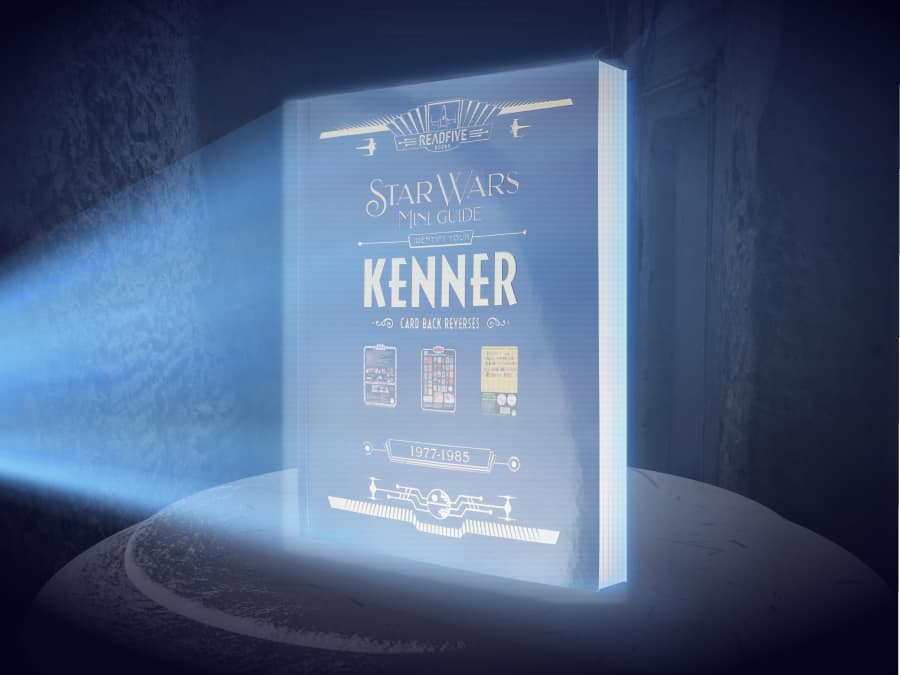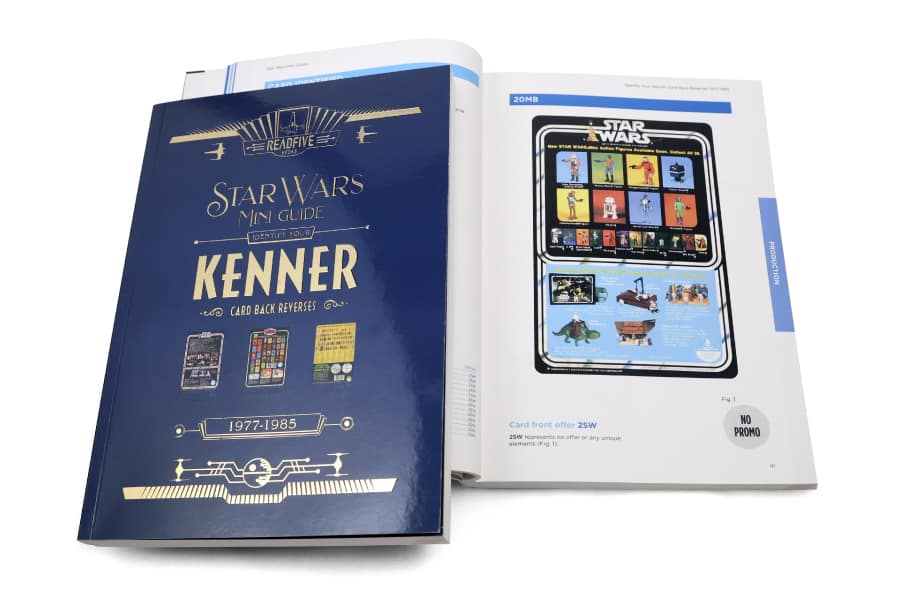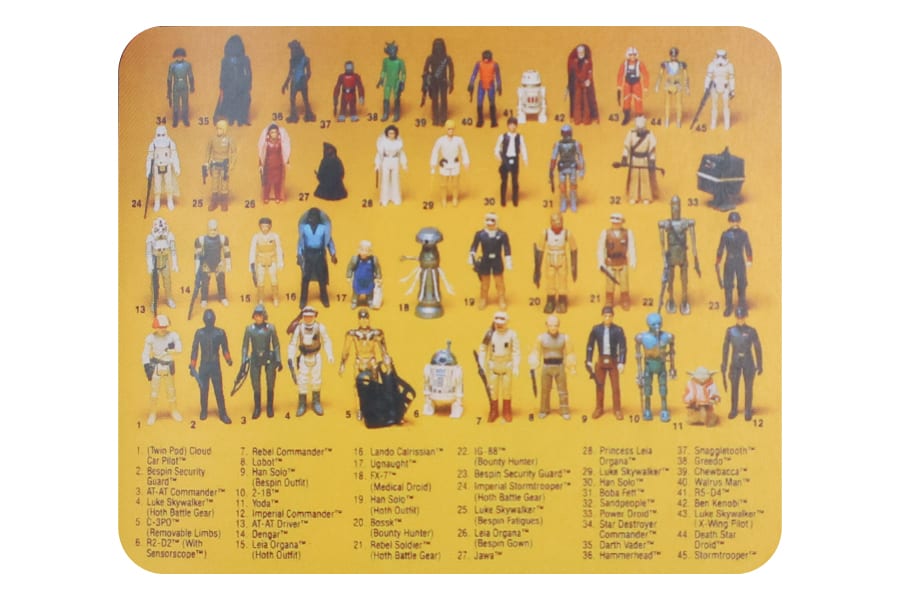To mark Star Wars day, and our new Paperback Book printing service, we spoke to Gianni Venturini, co-author of “Star Wars Mini-Guide: Identify Your Kenner Card Back Reverses”. This indispensable reference for collectors of Star Wars figures was printed by Solopress last year as part of the run-up to our launch of Paperback Books as a new product to order from solopress.com. We spoke to Gianni about how he came by his passion and knowledge around Star Wars, and how the new book came about.
A long time ago, in Shepherd’s Bush….
Firstly, we asked Gianni about his first encounter with the Star Wars universe. His story is similar to that of many of his generation:
My mum took me and my brother to see the film in Shephard’s Bush. I think it was in half-term, around February 1978, so I was only four old at the time. I think there are a lot of people who are really into it and are of a similar age, because it made such an impact.
From that formative experience sprang his childhood love of the toy figures depicting characters from the films. Acquiring new figures became a fascination for the young Gianni:
My Christmases thereafter were all about getting these Star Wars Action figures, that’s all I’d really ask for.
The Course Reawakens
Like many young people, his interest in the toys of his childhood began to wane as Gianni grew into his teens. However, Gianni’s passion for Star Wars figures was reawakened when he attended a course at the London College of Printing (now the London College of Communication):
Obviously, you grow out of these things, but later on, I went to the London College of Printing (now the London College of Communication), in Elephant and Castle. When I was there, A friend of mine brought in a book by Steve Sansweet who’s a well-known collector with the largest private collection of Star Wars memorabilia out there.
Looking through the book, Gianni saw a section on the last issue of figures; the last seventeen figures that toy company Kenner ever produced. They were figures that He’d never seen before. At this point, GIanni realised that he’d been somewhat oblivious to the full extent of the range. This rekindled his passion for the figures, and set him on a course to find out more:
That’s what really got me back into collecting. I would go out and source these figures that I hadn’t encountered as a kid. At the time, that wasn’t a particularly straightforward thing to do. Ebay wasn’t really a big deal then. It was all about going to toy fairs and things like that and just picking up whatever you could get your hands on.
The Rise of the Collector
At that point, as a student, Gianni didn’t feel he could justify the expense involved in becoming a collector of pristine boxed examples, so he began seeking out loose figures of the characters he hadn’t encountered as a child. Even so, these examples proved to be a good investment in the long run:
Loose figures still seemed expensive to me at the time, but even they have appreciated in value significantly over time. Compared to the prices these days, they were a steal, so it was a good time to collect them.
I remember picking up one well-known figure called Yak Face, which was only available in Europe and Canada, you couldn’t get it in the US. It was £50 which seemed like an absolute fortune at the time, but today he’s worth around £400 plus!
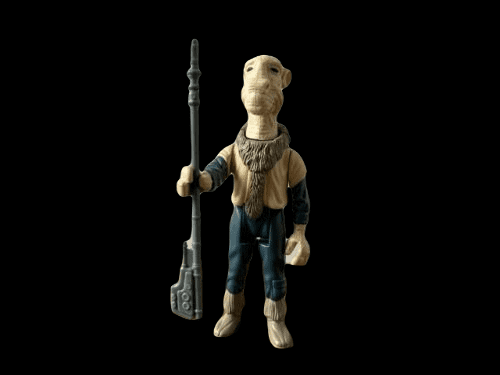
Read Five Designs is born
Over the following years Gianni’s fascination with all aspects of the figures production runs grew, and so did his collection. This eventually led to him forming Read Five Designs along with fellow-enthusiast Gregory Armstrong.
The company published posters featuring fabulous original designs that both celebrated the Star Wars universe and in some cases served as a checklist for collectors of the figures. The move into books came with their comprehensive, A3 coffee table book documenting the Star Wars figures produced by Kenner.
Not all figures are created equal…
We asked Gianni about Kenner’s role in manufacturing the figures:
Kenner was the toy company that owned the rights, but they outsourced manufacturing to different companies. There were three manufacturers, Unitoy, Smile and Kader, and manufacturing was mainly carried out in Hong Kong, Taiwan and Macau.
The complicated arrangements between licensees and manufacturers in different territories around the world was to become another source of fascination for collectors. According to Gianni:
This led to variations between the figures, which leads to another rabbit hole for collectors to go down. They’ll pick up one version, and then get another because the moulding is slightly different or it’s made from a different material!
No match for a good blaster
Another area of interest for collectors is the accessories that accompanied the figures. Whether or not a character still has his or her blaster, lightsaber, helmet or other personal effects can have a great bearing on its value. As Gianni commented:
So many of the accessories were these tiny pieces of plastic, it’s easy to imagine how they got lost over time. There’s a particular version of R2-D2 that came with a lightsaber accessory that is rare to find nowadays. The lightsaber would fly out of the R2-D2 figure as it did in the scene on Jabba’s sail barge in Return of the Jedi. As you can imagine, it’s a very easy thing for a child to lose!
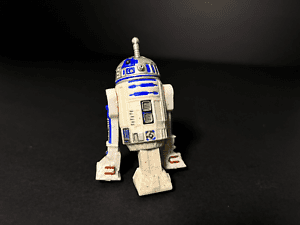
Judge me by my size, do you?
So Read Five set about funding and creating “Star Wars Toy Guide Volume One, Kenner Action Figures 1977-1985”. It turned out to be a weighty tome, but it also gave rise to the idea of producing lighter, paperback mini-guides focused on specific key information.
We produced this large A3 coffee table style book which is over 500 pages and tells you all about the history of the Kenner figures, and all the variations that ever came out. In producing that we realised we could produce pocket-type guides, by pulling certain information from the main book we could produce these pocket guides that people could carry around with them.
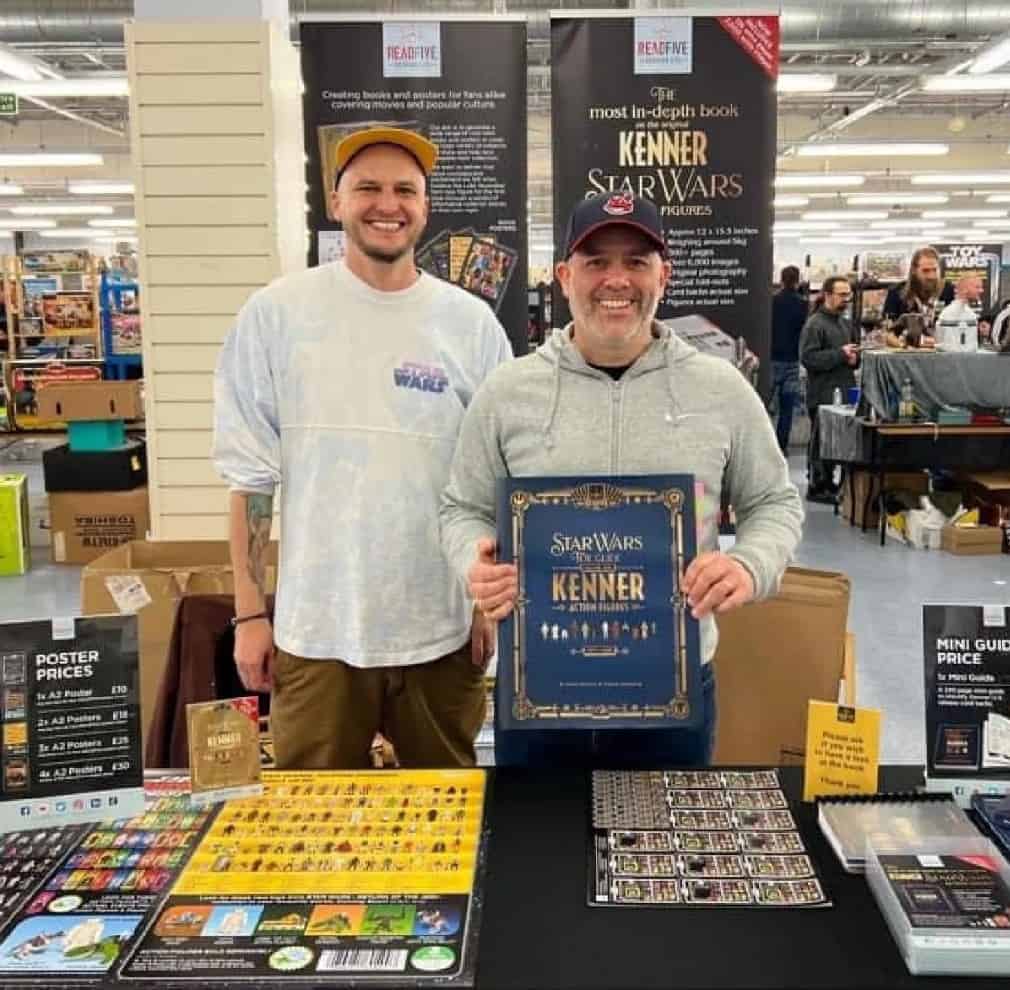
For the first mini-guide, Gianni decided to focus on the card backs, the piece of card that would have the bubble attached to it that would contain the action figure and its accessories:
We had the idea for this pocket book where you could take an unknown card back, and by asking questions and navigating your way through the book, arrive at a positive identification. A little bit like one of those “Choose your own adventure” books.
Successful navigation, whatever the odds
This is the master stroke of the “Star Wars Mini-Guide: Identify Your Kenner Card Back Reverses”. The guide asks you a series of questions about your unidentified card such as: what logo does it feature? How many illustrated characters appear on the card? Does it have a sticker?
For every answer, there is an instruction to jump to a certain page and answer the next question. Once you’ve whittled down the options and eliminated all other possibilities, you arrive at your CARD IDENTIFIED page. It’s a uniquely valuable resource for collectors.
Choosing materials and finishes
When it came to picking paper stocks and finishes for the paperback mini-guide, Gianni’s experience with print and design came to the fore.
The guide was the offspring of the 500-page, A3 coffee table book, so there needed to be a certain family resemblance. In order to echo the premium feel of the oversized original, Gianni opted for a gloss laminated board with gold foil lettering. The gloss-laminated, 300gsm cover helped with durability, while the gold foil lettering gave the title punch and authority.
When it came to choosing paper stock for the inside pages, considerations around colour were paramount. In addition to the need for accuracy in reproducing the colours on the card backs themselves, the book’s unique navigation system relied on a colour code for readers to move quickly and easily between sections.
Importance of colour
Colour was used as a primary way to categorise the card backs, blue represents Star Wars, red represents Empire Strikes Back, green represents Return of the Jedi and orange represents the Power of the Force range.
Different tints of these colours also represent variations in the card backs, so accurate colour reproduction was essential for the guide to function as intended. Gianni chose 120gsm white silk inner pages to allow for vibrant and accurate reproduction of the beautifully presented artwork.
If you’re inspired to reach for the stars and publish your own book, whether that’s a reference guide like Gianni’s, or a debut novel, our Paperback Books printing service will ensure professional results.

